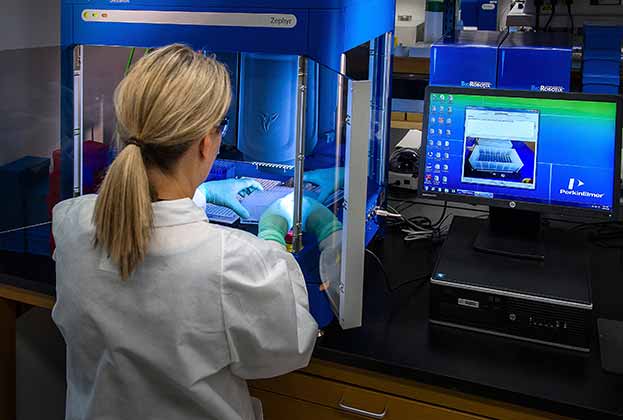The planning system needs to support the ambitions of the sector and improve the supply of lab space
The next general election can be held at any time between now and 28 January 2025. All political parties are in full electioneering mode and proposing measures to support the ambition to make the UK a ‘scientific superpower’.
It is widely acknowledged that there is a shortage of lab space across the UK. Many schemes are stuck in planning, with the UK planning system being accused of being too slow to deliver. Planning was firmly in the spotlight in the Autumn Statement. Financial incentives were announced to encourage take-up of Local Development Orders (LDOs) and a ’premium planning service’ for commercial applications. Details are awaited, but early reports are that this service will be targeted at large-scale regeneration schemes.
In June 2023, Jeremy Hunt, the Chancellor of the Exchequer, announced a Life Sciences Growth Package that proposes consulting on factoring R&D considerations into planning decisions; and working with local authorities to encourage proactive planning tools, such as LDOs and Development Corporations, to bring forward development (in England). Rachel Reeves, Shadow Chancellor, announced in October 2023 that Labour reforms would include: fast-tracking the planning process for priority growth areas of the economy, such as battery factories, laboratories, and 5G infrastructure. She also proposes to raise the stamp duty surcharge on non-UK residents to appoint 300 new planning officers. The planning system is no stranger to planning reform and there is much more to come in 2024.
The Development Pipeline
In total, Savills has recorded around 20.2m sq ft of science-related projects in the planning pipeline today. Of this, 62% is ’subject to planning’ so still in the system. Ten percent, or just under 2.1m sq ft, is ’under construction’. Against this increase in the number of planning applications being submitted, an analysis by the Royal Town Planning Institute in May 2023 showed a 25% loss of public sector planners between 2013 and 2020, whilst the private sector experienced an 80% increase over the same period. Against such stark facts, placing more targets on local planning authorities to process planning applications more quickly will never deliver if there is no one there to process them.
Planning in Practice
Recent years has seen a growth of R&D activity and life sciences in town/city centres. There are a number of reasons behind this, such as access to capital, the synergistic benefits of clustering and access to talent. This dynamic has combined with available real estate opportunities to repurpose vacant commercial buildings and a focus on reducing Whole Life-Cycle Carbon costs through conversions of buildings rather than new builds. There are four ways to obtain planning consent:
- Planning application – a grant of planning permission by a Local Planning Authority or the Secretary of State.
- Local Development Order – a general consent granted by a local planning authority that is similar to an enterprise zone regime, but without the tax incentives.
- Development Consent Order – mainly applicable to infrastructure and strategic scale projects to provide the range of consents required.
- General Permitted Development Order – a national grant of planning consent, such as the Use Classes Order and the General Permitted Development Order.
The change made to the Planning Use Classes Order in September 2020 with the introduction of Class E ‘Commercial, Business and Service’ Use, which grouped together retail and commercial uses in the same Use Class. This change removes the need for a change of use application, unless there is a restriction on the planning permission, but rarely avoids the need for a planning application.
The planning system needs to shift up a gear to support the ambitions of the sector and to improve the supply of lab space
Emma Andrews, Planning Director, Savills
Conversion of commercial buildings tends to involve physical adaptations that require planning consent, such as the installation of a flue, additional power or mechanical plant, alterations to servicing and waste management. Such ‘minor’ works can require the submission of a planning application, with the associated time and costs of preparing drawings and technical reports and inherent risks of the planning process.
The issue is that many of the schemes that are locked in planning are relatively small-scale and will not benefit from many of the changes to the planning system that are aimed at larger-scale developments.
Easing the backlog
There is a compelling case for the introduction of a new General Permitted Development Right (GPDR) for the conversion of commercial buildings into R&D use. This would require Government to adapt the existing Town & Country Planning (General Permitted Development) Order, which has been done to facilitate conversions of commercial buildings to housing. Why not adopt the same approach for labs and R&D space and add a further option for delivering space more quickly and where it is most needed?
A new GPDR for R&D/life science development would help reduce the number of planning applications requiring processing by local planning authorities, even if the GPDR was to be subject to a ‘prior approval’ process for matters such as flood risk, heritage and noise. This would reduce the length of time required for planning, reduce the costs of preparing technical reports and drawings and help to encourage more landowners and developers to commit resources to converting buildings into labs. Moreover, it would enable the planning system to focus on the most significant planning applications.
Perhaps the Premium Planning Service referenced in the Autumn Statement will also apply to science schemes to help these schemes move through the planning system more quickly.
Read the articles within Spotlight: Life Sciences – Trends & Outlook below.
.jpg)






.jpg)